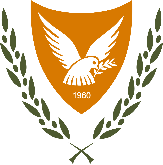The Dams and Water Management Systems of Minoan Pseira / Philip P.Betancourt.
Τύπος υλικού: ΚείμενοΛεπτομέρειες δημοσίευσης: Havertown: INSTAP Academic Press. Περιγραφή: 113 p. : ill.,map. ; 23 cmISBN:
ΚείμενοΛεπτομέρειες δημοσίευσης: Havertown: INSTAP Academic Press. Περιγραφή: 113 p. : ill.,map. ; 23 cmISBN: - 9781623030001
- Bronze age -- Greece -- Pseria Island
- Excavations (Archaeology) -- Greece -- Pseira Island
- Αρδευτικά έργα -- Ελλάδα -- Ψείρα νησί
- Irrigation engineering -- Greece -- Pseria Island
- Water-supply engineering -- Greece -- Pseria Island
- Prehistoric archaeology ; Management of land & natural resources
- Προϊστορικής αρχαιολογίας, Διαχείριση της γης και των φυσικών πόρων
- Βusiness & Economics -- Real Estate -- General
- Pseira Island (Greece) -- Antiquities
- Pseira (Extinct city)
| Τύπος τεκμηρίου | Τρέχουσα βιβλιοθήκη | Κατάσταση | Γραμμοκώδικας | |
|---|---|---|---|---|
 Books
Books
|
Βιβλιοθήκη Τμήματος Αρχαιοτήτων = Department of Antiquities Library | Διαθέσιμο | DAL00019501 |
Description based upon print version of record.
1. Introduction 2. The Pseiran Agricultural Crisis in the Middle of the Second Millennium B.C. 3. The Pseiran Water Management Systems 4. Comments and Discussion; Appendix: Geological Setting for the Dams of Pseira, by Floyd W. McCoy; Index.
Excavations at the Bronze Age seaport on Pseira Island uncovered the remains of sophisticated water retention systems that included the addition of retaining walls to prevent erosion, massive dams with associated reservoirs, and small check-dams to ravines that reached over one hundred meters in length in order to control water runoff and make it available for human use. Agriculture was one of the cornerstones of the Bronze Age Cretan economy, and it is no surprise that the ancient inhabitants of the island went to great lengths to control water runoff and make it available for human use. Desp Excavations at the Bronze Age seaport on Pseira Island uncovered the remains of sophisticated water retention systems that included the addition of retaining walls to prevent erosion, massive dams with associated reservoirs, and small check-dams to ravines that reached over one hundred meters in length in order to control water runoff and make it available for human use. Agriculture was one of the cornerstones of the Bronze Age Cretan economy, and it is no surprise that the ancient inhabitants of the island went to great lengths to control water runoff and make it available for human use. Despite the application of traditional archaeological survey methods, the full extent of the water management systems was not understood fully as the island's rugged topography prevented intensive and thorough survey of many places. The use of a differential Global Positioning System (dGPS) unit provided the opportunity to take a fresh look at the evidence for water management on the island. The results of this study contribute substantial amounts of new information on the little known subject of Minoan water conservation and control.
Δεν υπάρχουν σχόλια για αυτό τον τίτλο.

